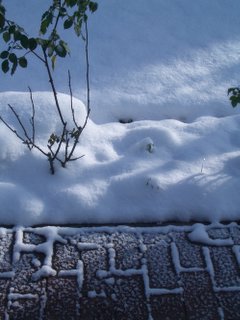
As I have been reading over the past couple of weeks I have been reflecting on what shape my study may take. I feel that it has to be open to many paths - but there still needs to be some structure or form. One way to look at this is by revisiting the purposes of my research.
For me freedom and playfulness, as perspective and practice, has been transforming professionally and personally, with colleagues, students, friends and family. Reflection on the freedom, playfulness and being has is empowering for my transformations. There is commonality and otherness about this sense of transformation that emerges when in dialogue with others about freedom, playfulness and being. Transformation occurs within a person, group, community etcetera, not something that can be applied from the outside. It appears to me that the natures of freedom, playfulness and transformation require that all three are explicit aspects of the research. That is the inquiry would not attempt to distance itself from the participants. The intention would be for participants to be able to transform themselves and participate in the transformation of others. Actually, it is probably enough for them to be able to identify that which is of transformation for themselves and others. How might I achieve this?
As an initial scaffolding for my thoughts about the process my research may take I will look at a generic structure, in the form of phases, proposed by Denzin & Lincoln (Table 1.1, p. 23, 2005).
Phase 1: The researcher as Multicultural Subject
Revisiting an exploration of my own traditions I feel that I need to further explore freedom and playfulness deeply, from a personal point of view and as a member of many communities. This includes exploring the traditions I embody from my family as well as those gained through research and dialogue with others.
The generation of a sharable construct of freedom and playfulness will be hampered, and possibly subverted, without a deep understanding of who I am and how I am evolving in relation to these ways of being.
Freedom, play, playfulness etcetera have lively, circuitous and interwoven histories. Bringing some of these together in new ways to suit my purposes is the parallel first step with situating myself and my shared histories. My guess is that throughout my research these two aspects will take on a life of their own - there will have to be some resolution before continuing however.
Ethically, if I am attempting to engender a transformation process with freedom and playfulness it would be remiss for me not to explore as many perspectives on my own and others understanding before unleashing it on the world. The aim would be to ensure that the inquiry was at least illuminating, if not a step towards transformation, for all participants.
Phase 2: Theoretical Paradigms and Perspectives
I have already discussed that out of the broad paradigms described, my research largely appears to fall into the constructivist paradigm. With a relativism, co-creation and transferability central to the 'products' of the inquiry.
When situating myself and participating in my inquiry then the paradigms associated with critical theory may provide relief and substance for all participants. When we are talking about being 'freer' to learn - having greater freedom... we have to question what limits or bestows this freedom etcetera. Feminist theory and its focus on emancipation may be informative here - emancipation through transformative inquiry?
Phase 3: Research Strategies
I have outlined above the start of my research - situating myself, in relation to freedom and playfulness as I evolve a philosophy of freedom and playfulness. I have already started evolving a philosophy of freedom and playfulness, reflecting on my personal lived experience as I proceed. There is an obvious, albeit unpredictable, path for this synthesising as I read Heidegger, Gadamer, Greene, Dewey, Steiner and so on. In situating myself I intend to record and interweave narratives from my family - an autoethnographic process. Once this has some sense of resolution - I would hope to have a sharable and accessible model, for want of a better word, for freedom and playfulness which I could use to enter dialogue with others.
These others would be people from my past, present and future who have some experience of transformation. The focus would be on inquiring into how our shared understanding of freedom and playfulness has a place in their experience of transformation and how to move to the next step of providing an environment that engenders freedom to learn and transform. This may take the form of an action research amongst a group of peers at the time.
The model cocreated could be introduced utilising critical ethnography with critical action research - taking the emancipatory and ethical lead from strategies such as feminist communitarianism. The inquiry may be informed though mindful inquiry and other global perspectives throughout.
I will aim towards forming the idiosyncratic, emergent and cohesive set strategies throughout the inquiry.
Phase 4: Methods of Collection and Analysis
In the same way the strategies will be emerging the methods of collection will adapt to suit the life of the inquiry. There will be interviews, observations, artifacts, autoethnography, textual analysis and more. It is intended that the methods of collection and analysis will be largely determined by the participants - including myself.
Phase 5: The Art, Practices, and Politics of Interpretation and Evaluation
Interpretation and evaluation will also be emergent during the inquiry - very difficult for me to imagine at this stage.
So there is a start - I need to discuss, read and reflect before the forms really take shape...
Denzin, N.K. & Lincoln, Y.S. (Ed) (2005) The SAGE handbook of qualitative research 3rd Edition, Sage Publications, California, USA.



No comments:
Post a Comment